Does your ATV make so much noise that it scares away all the wildlife? Do you get noise complaints from neighbors due to your noisy ATV?
One question I often get is “How To Quiet ATV Exhaust Noise?” Here’s everything I researched on the topic and even tried a few on my ATV.
Regardless of why you are looking to quiet an ATV exhaust noise, there are many ways to go about it. But make sure to buy something heavy like stainless steel with a full weld for durability.
Here are the most effective ways to silence the noise from your ATV.
A noisy drive is a part of riding an ATV, but what if it gets to intolerable levels. Not only do you run the risk of damaging your hearing, but also incur the wrath of your neighbors.
My pick among the lot is the silencer muffler as it is easy to install and works efficiently than the others.
On the same note, you might also want to keep an eye on power loss and buildup of backpressure.
TABLE OF CONTENTS
A silencer is one of the most effective and easiest methods to silence an ATV without affecting its performance. The silencer muffler is installed upon the existing OEM muffler.
Packed with baffles and sound-absorbing materials, they act as an additional exhaust and suppresses the noise much better than anything else here.
In the case of silencers, the sound travels through the OEM exhaust and then through the extra muffler packed with sound dampeners.
The resultant noise is as much as 10-15 decibels lesser when revving mid-range and 6-8 decibels in idle time, which is advantageous.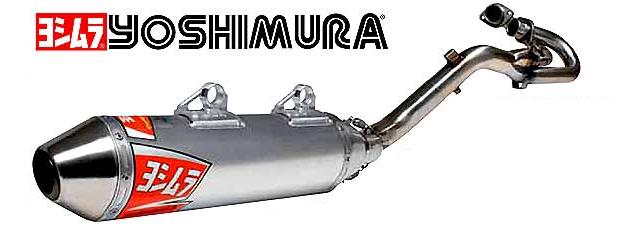
But these measurements depend on the make, model, and year of the ATV.
While these might not sound impressive, you need to understand that, with every addition of 3 decibels, the intensity of sound nearly doubles and reduces the safe exposure time by half.
With that in mind, a suppression of 12 dB equals approximately four times the noise level reduction.
The silencer is also easy to install (unless you want to weld a bracket to hold it) and takes about 5-10 minutes at the max. That makes it easy to attach and remove as per your discretion.
There are quite a few different brands offering silencers out there, all working on the same principle.
They offer various options, depending on the ATV you own. There are also universal models if you cannot find one specific to your bike.
While the universal models work well, you might have to do some modifications to fit your ATV. The one that I use is by The Silent Rider, which has worked pretty well for me.
Another option is the Kolpin ATV Stealth Exhaust, again much preferred by riders and hunters.
Remember, just because a silencer muffler works for your friend doesn’t mean that it would work for you too.
I have seen discrepancies brand wise and again model wise. Do your research before choosing one.
Kolpin Stealth Exhaust 2.0 With Heat Shield - 53570
$134.99
BUY ON AMAZON
I earn a commission if you click this link and make a purchase at no additional cost to you.
07/21/2022 12:03 am GMT
Another compelling option is the spark arrestor, which was initially designed to prevent forest fires.
It comprises a steel mesh and is installed in the exhaust pipe to catch any carbon embers coming from the system.
This mesh can also act as a sound dampener, and when the sound passes through, it breaks into waves with reduced intensity and speed.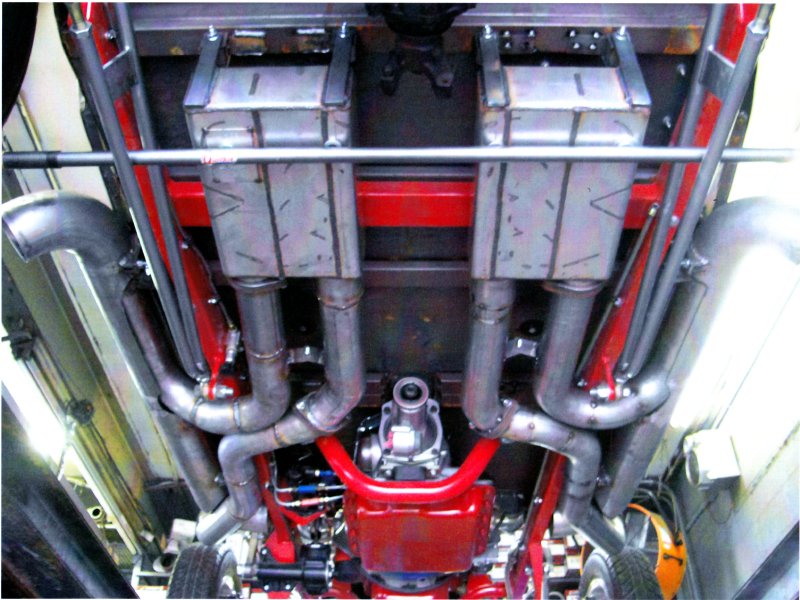
A spark arrestor is mandatory for all ATVs in the USA. The chances of hot materials coming out of the exhaust are very high, especially if you have repacked it.
The danger of wildfires is severe, and you do not want a disaster of such proportions in your hands.
Most ATVs come with a spark arrestor, but if your bike doesn’t come with one, you can buy one for $10.
Few models have discs that catch sparks, while older models have a structure that works by the centrifugal principle.
Unlike the above, you can see a reduction of about 2-3 decibels, which might not be much but definitely works.
The mesh may restrict the airflow but not enough to affect the power. In fact, it can improve the back pressure and hence the performance.
Though the spark arrestor can either be dome-shaped or flat, the former works better to muffle the sound and improve airflow. Ensure that you clean it after every ride to maintain a steady flow.
If you are looking for a cheap yet simple alternative, you might want to look into packing the muffler.
While this is not an ideal option, it can work in a pinch by absorbing the noise and vibrations created by the ATV. You can go for sound dampening fabric for the stuffing.
The process, however, depends on the type of muffler. If it is held together by screws and rivets, packing is more effortless.
Pack the material in the empty spaces or replace the existing ones with newer stuffing to create a silent muffler. Whereas in the case of welding, it is not worth dismantling everything.
The disadvantage in this process is the restricted airflow, which can result in an overheating engine.
Some drivers opt for steel wool; while it may appear to do the job first, it is always a fire hazard since it is not built to resist or handle heat efficiently.
They work until they get hot enough the disintegrate and then are thrown out of the muffler.
You not only run the risk of setting a wildfire, but the stuffing inside can also catch fire due course.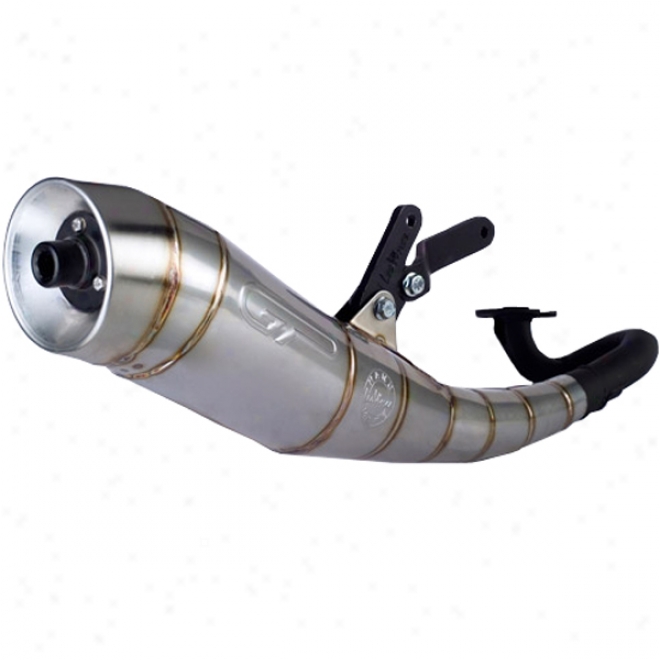
Eventually, the steel wool is dampened by oil and other substances, expediting the muffler’s rusting process. They even lose their dampening properties over time.
A better alternative to steel wool is fiberglass. It can handle heat better than its opponent and can last longer, ensuring that it is the budget-friendly option of the two.
There is no chance of hot burning material escaping the muffler since they are heat resistant.
While fiberglass packing should do the job, you can also go for sound dampening fiberglass mats if money is not an issue.
If you already own a silencer and still wonder why your ATV creates so much sound, the chances are that the insulation had lost its sound dampening properties.
Not many know, but experienced drivers know that similar to mufflers, the silencers should also be repacked every so often.
The silencer comes packed with sound insulation, which becomes dirty and does not absorb as the days go by.
If your silencer has seen some years or driven quite a lot of miles, you might want to replace the sound dampening material or insulation present with new material.
The stuffing is similar to that of a muffler; you can purchase the same from an aftermarket auto parts store or Amazon.
The process is straightforward and involves dismantling the silencer, removing the existing material, cleaning it, and packing it with new material.
You can learn about the entire process here at rockymountainatvmc.com. You might have to repeat the method every few months or so, depending upon the usage.
Every ATV comes with a built-in muffler in the exhaust system. It serves to absorb the excess noises coming through the exhaust system.
However, as with every part, it is also subjected to wear and tear, and as the days go on, they degrade.
Such a muffler would not be able to reduce the noise as it once did. If you find your exhaust being particularly noisy, you might want to examine the muffler.
The chances are you might find small cracks and rust. If possible, repair it, else, change the muffler for a better sounding ATV.
The same is valid with the exhaust also. Your exhaust pipe can also develop cracks and leaks due to wear and tear. You can identify the leak by the black soot around the area.
Also, check the welds and joints for cracks. Do not forget to closely inspect the initial few inches as they are prone to leak due to the fluctuations in temperature.
Seal the leak, however small it might be; even a hairline crack can cause excess noise.
Another not so famous option but works as well as the quiet core inserts. There aren’t many manufacturers for this product since it’s mostly aftermarket stuff.
Regardless of that, many vouch for its integrity and use it in sound-sensitive areas.
The quiet core insert is usually made of 201 stainless steel with a porous pipe that fits inside a muffler.
If your muffler doesn’t contain a spark arrestor, better purchase one to use in conjunction with a quiet core insert.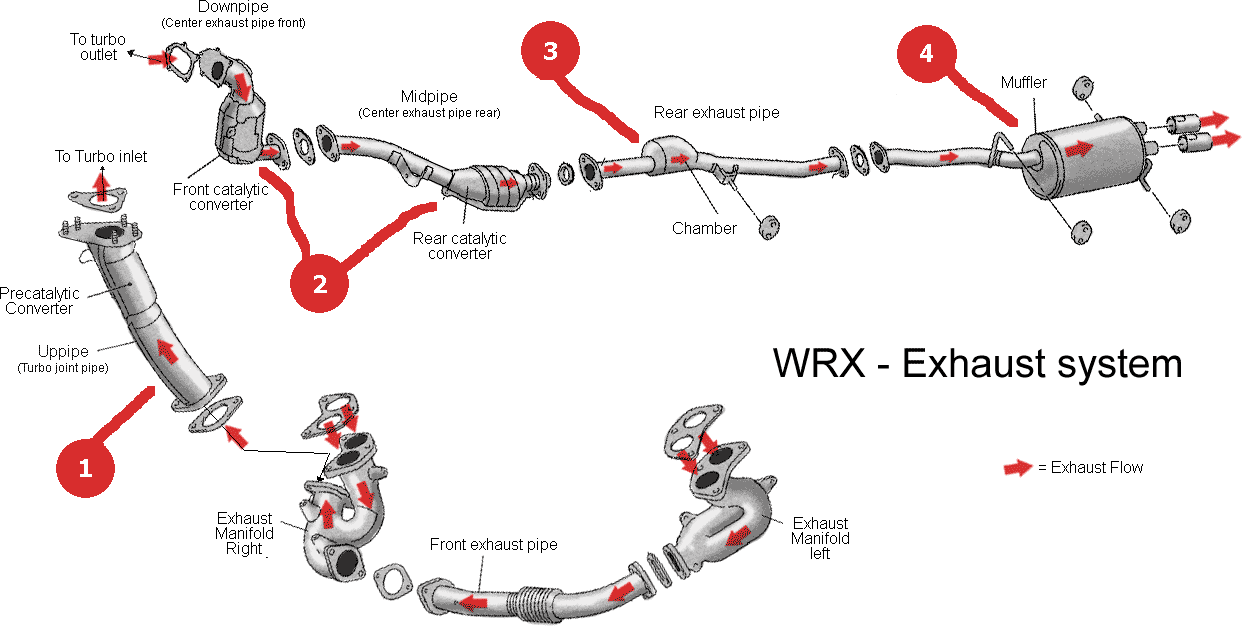
The combination can give you a reduction of about 3-6 dB, which is quite a lot in terms of the noise level.
It is effortless to install and takes you just about 2 minutes, even for a novice. So, it is one of the quick solutions in any emergency.
But before installing, make sure that your muffler is compatible with a quiet core insert; else, you might have issues with your warranty.
Unscrew the cap and open it; place it and screw it back. You are all set to go.
What if there is no quiet core insert that is compatible with your muffler?
In that case, you might want to make one on your own. And all you need is a universal baffle pipe insert for your exhaust pipe.
They come in various sizes and designs to suit your pipe; hence you have the option of selecting one that fits within your exhaust.
They are easy to install; all you need is to insert and bolt it down. They are usually made of metal and hence can last a long time.
But the disadvantage with this is that the remodeling reduces the airflow. Hence it is better suited for slow trail riding with low rpm.
If you use it for racing, the restricted airflow can create too much back pressure, harming the engine.
While this doesn’t precisely quiet down the noise, it stops it from traveling too far. This makes a lot of difference, especially when you are hunting. You do not want to scare the animals away.
The best way to handle this is to add an inlet turndown pipe for the muffler.
With a straight exhaust, the sound travels straight hence can go a long distance. In a few cases, residents 3 miles away have heard the roars from ATV parks.
If you have a turndown pipe, the sound is directed towards the ground, and it doesn’t travel that far.
The reason is that the uneven surface of the ground acts absorbs the sound while breaking down the sound waves.
The aftermarket exhaust system comes with a downward bent snout, which is the inlet turndown pipe.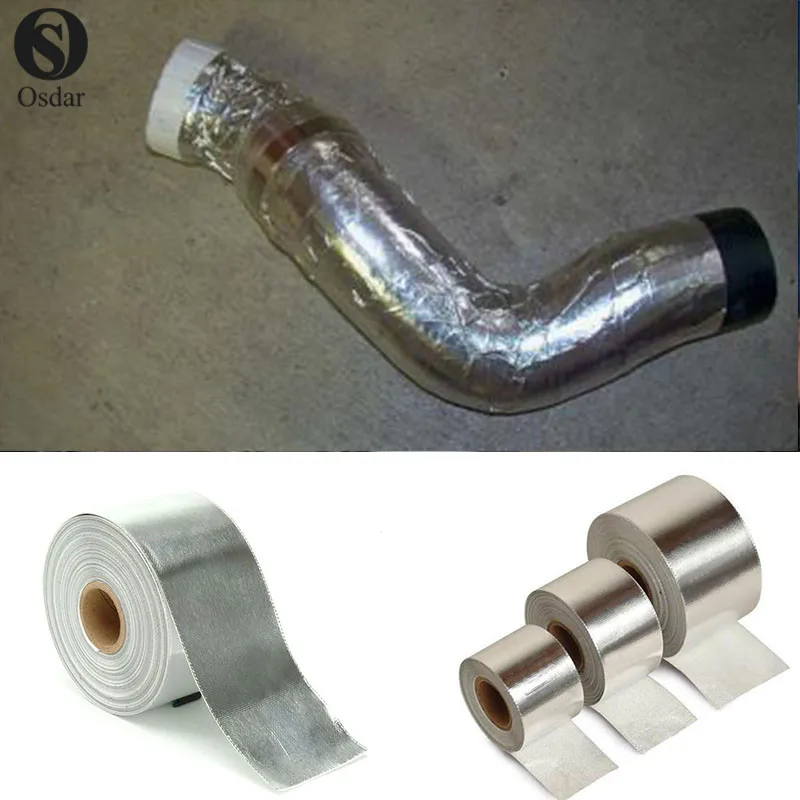 If your system doesn’t come with one, you can bolt in any pipe with a 90° bend in it.
If your system doesn’t come with one, you can bolt in any pipe with a 90° bend in it.
In any case, the installation should be simple; there is nothing complicated about it. Use this in addition to any other method for a better result.
The DB killer is essentially a muffler tip that you attach to the end of the tailpipe.
It comes with a built-in spark arrestor in addition to the sound deadening properties. Made of stainless steel, the DB killer is easy to install and is usually just slips inside.
Again, there aren’t many manufacturers for this, but you can find a few on Amazon.
Mostly they are universal fits; however, you might want to check the diameter to verify the fit. The noise cancellation depends on the make, model, and also the sound intensity of your ATV.
The DB Killer, while eliminating the noise, also increases the backpressure.
If time is not the issue and you have experience working on ATV, why not try constructing an additional muffler for your ATV.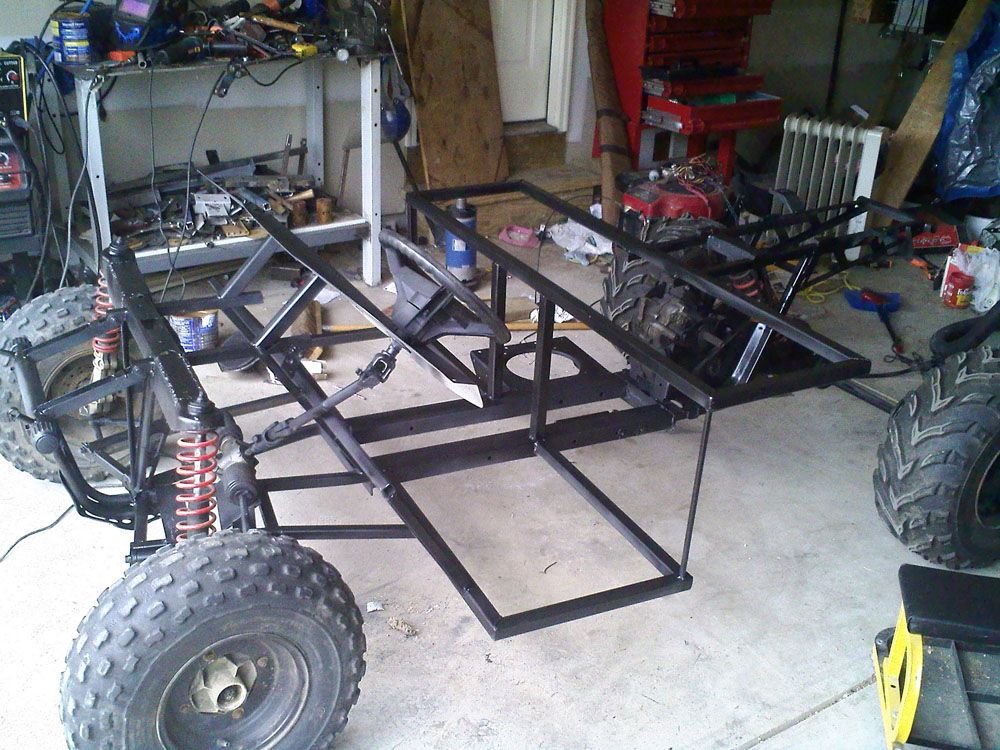 All you need is a car muffler and a mounting bracket for the system.
All you need is a car muffler and a mounting bracket for the system.
A car muffler on ATV works much better than the stock one and goes right in without affecting the performance and backpressure. While they are also inexpensive, you might want to select one from a small car so as to fit it right in.
The muffler that you choose should not be too excessive for your ATV. If so, there are risks of power loss and too much back pressure, affecting the engine.
If you have no experience with welding, you might want to get the help of someone to fit it in and make the mounting brackets. To make them, you need an exhaust pipe and flat steel.
You now have a variety of methods to silence your ATV; While reading that, you might also want to know why your ATV is so loud in the first place.
The noise level with ATVs is so high since they have high RPMs to travel rough terrains and are generally driven very fast.
They also have short exhaust systems and little to no insulation for your engine.
Manufacturers mostly concentrate on the power and rarely on the noise levels. While they are quite loud, you cannot fault them for their performance.
Even though everyone tends to blame the exhaust, the engine also contributes to the noise level to a great extent.
Here is a rundown of the areas where the sound may originate.
As with every four-wheeler, ATVs also have a combustion engine, and they are loud. Unlike cars, they are not in any chamber that is designed to insulate the sound.
To start with, ATVs can either be a 4-stroke or a 2-stroke. Nowadays, four-stroke engines like that with cars have become a standard.
And in layman’s terms, 4 strokes in the piston complete one cycle. Every cycle has a distinct process, which I discuss below.
Coming to two-stroke engines, considering that there haven’t been one produced since 2006, it is probably an ancient story. The last of its kind was from Yamaha: Banshee 2-stroke.
 The ATV signals the engine to start. The piston is now in the downward stroke within the cylinder when the intake valve opens and allows air and fuel.
The ATV signals the engine to start. The piston is now in the downward stroke within the cylinder when the intake valve opens and allows air and fuel.Each stroke happens quickly and explosively such that there are many moving parts every second creating the noise you hear from your ATV.
The disadvantage comes from its setup, where there is nothing to isolate noise coming from the engine.
The open design also doesn’t allow for insulation, and neither can you add any shielding to muffle the noise level.
While cars are also 4-stroke, their engines are housed in compartments with insulations to muffle the combustion sounds and reduce the noise level.
Mufflers in ATVs are essentially lightweight and don’t do anything to reduce the sounds without talking about muting it.
They are essentially tubes with chambers holding sound dampening materials. When sound travels through it, they are either absorbed or canceled when they bounce off the chambers.
The exhaust system of ATVs from the engine to the tailpipe is concise and barely enough.
The generated backpressure doesn’t travel long enough for it to dissipate the sound and vibrations. And the straight design doesn’t do much either.
Honda makes the quietest ATVs in the market, currently closely followed by Yamaha. The disadvantages with Honda are the low ground clearance and a small fuel tank.
The disadvantages with Honda are the low ground clearance and a small fuel tank.
Considering these, you might want to go for Yamaha Grizzly 700 EPS Realtree Camo, especially when hunting where you need the least sound possible.
A heat wrap has sound dampening properties, but they are designed to keep the heat inside. They do not work for low frequencies, but they can reduce to an extent at higher frequencies.
In any case, they are not advisable unless it is to plug a hole.
Yes, it is illegal to drive a vehicle with a loud exhaust on roads, but the regulations and the punishment varies from state to state.
Few states like California make it a crime to modify the exhaust system to make it louder.
It is illegal to drive noisy ATVs on the roads and mainly in trails.
Even without considering the legal side, it is not suitable for the environment either.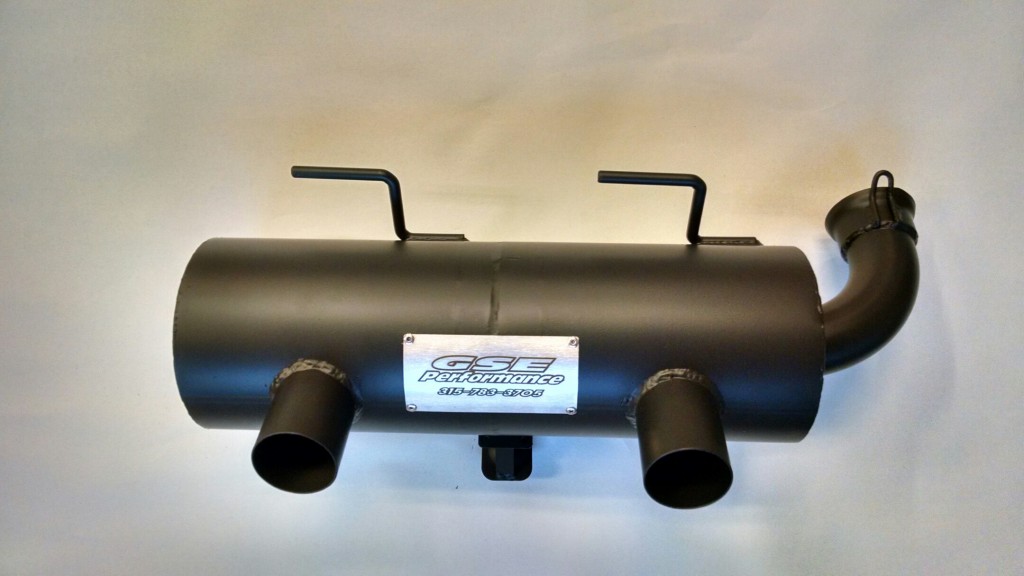 Noisy quads are the reason why many trails and ATV parks close.
Noisy quads are the reason why many trails and ATV parks close.
There are many ways by which you can quiet down the exhaust noise from an ATV. The best and my pick is the silencer.
If you cannot be bothered to try any of these, you can always go for a quiet ATV. Unless you are racing and performance is an issue, do not modify anything.
If none of the above works, there might be a problem with your engine. Like your car, the ATV also requires regular maintenance and oil change, as mentioned in the manual.
ByJulius
*This post contains affiliate links. I will earn a commision from any product you buy.
Are you a hunter, avid rider, person who wants to have a chat with a passenger whilst riding or simply hate the loudness of a stock exhaust?
Then this article is for you as i discuss 6 ways on how to quiet that exhaust, also with additional tips.
The best, although somewhat expensive way to make your ATV more quiet is with a silencer. Aftermarket silencing mufflers are mounted onto the stock mufflers which help reduce the exhaust noise.
How much will one help? Well, it entirely depends on make and model of your quad, but expect to see at least a minor decrease in the loudness.
There are many of them you can choose on the market, but in my opinion this one made by Kolpin on Amazon (link) is the best.
The amazing thing about it is that it’s also universal, and will work on most ATVs out there.
If you already have a silencer on your quad or are willing to get one make sure to not forget repack it. Some people repack them once a year, others every two weeks but i would suggest to do so just when you start to notice that it sounds louder than usual.
Some people repack them once a year, others every two weeks but i would suggest to do so just when you start to notice that it sounds louder than usual.
The main item of this DIY project is the packing material which you can also get on Amazon.
Here’s a tutorial on how to get it done.
Another thing you could do is replace the stock muffler completely with a new or used one. Mufflers, just like the engine parts, start to perform worse over time, so it makes sense to replace them for the better good – it’s also a great cheaper (especially if you get a used one) alternative to a silencer.
In fact you might consider replacing stock muffler even if you will get a silencer anyway as that can make the four-wheeler even less loud. You could also replace the muffler that comes with the ATV with an aftermarket one, especially with a longer tail pipe.
Things like chrome exhaust extension tips, flexible metal conduits, high temp flexible hoses, vacuum hoses or even bicycle inner tubes can be attached to the end of a muffler to reduce the noise a bit (just make sure they can go into or over the exhaust ending).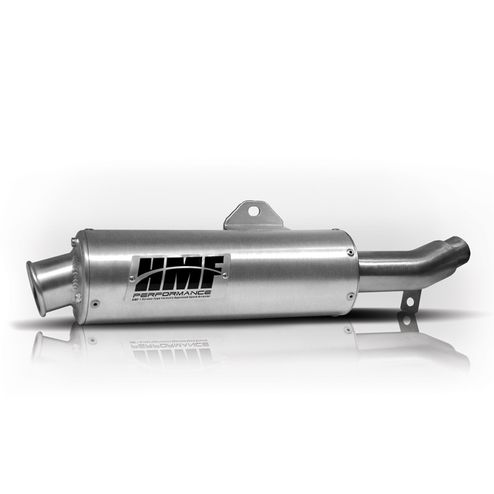 Longer extensions will make the exhaust noise more quiet – there are even people who get a couple of feet and wrap it around the bike!
Longer extensions will make the exhaust noise more quiet – there are even people who get a couple of feet and wrap it around the bike!
Car mufflers have been used as homemade silencers on many engines for ages, so welding one onto an ATV can be a smart idea, although it might not look as pretty.
Make sure that the exhaust itself doesn’t have any cracks as they might leak additional noises – clean the spark arrestor too as it can also contribute to it.
Sure this article is about exhaust noise reduction, but i’m pretty sure you will be interested to know that the overall ATV noise production comes not just from it.
Simple things like making sure any accessories you have on your ATV are tight and not dangling around can drop off a decibel – also, go around and tighten any bolts that might seem loose.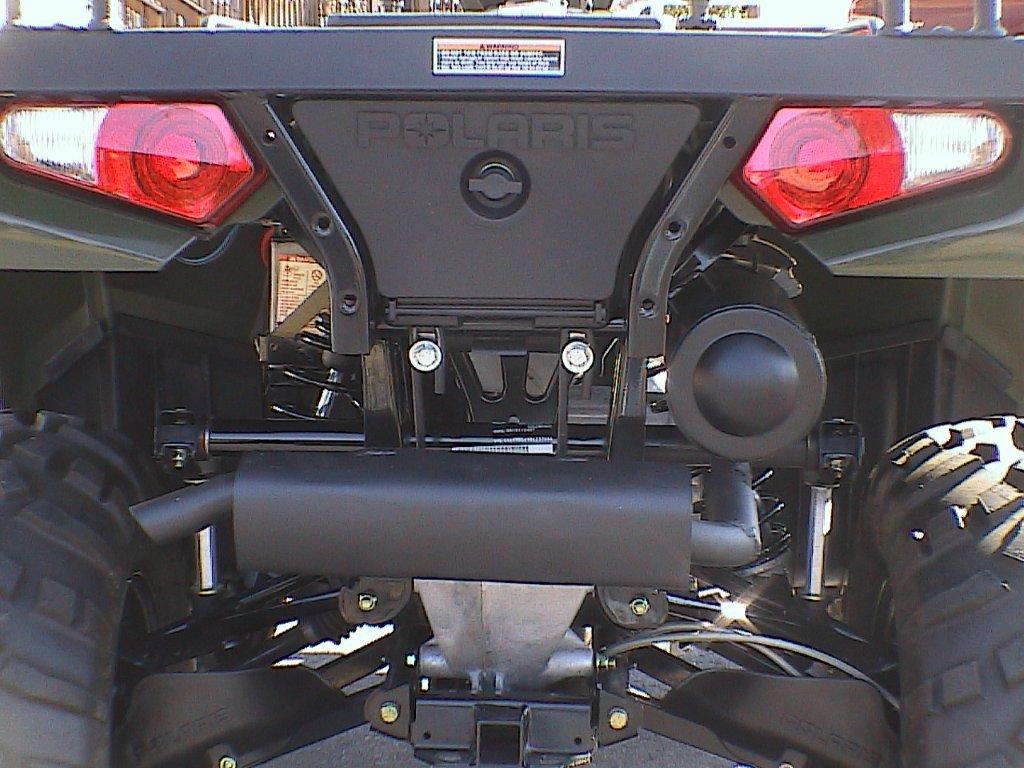
Different ATV’s make different noises, as some might make a louder noise from the transmission than the muffler itself, so in that case there might be nothing much to be done.
Many folks might think that adding a silencer or any sort of modification to the exhaust system will make the ATV slower but that’s not always the case. Sure there are mufflers, silencers or things you could do that will decrease the 4 wheelers speed or pulling power, but even then i would rather lose a little power and make the thing more quiet.
Usually newer quads are not as loud as the older ones, so if you want to get the best results possible, you might just start saving money.
If the quad you have is a manual, it would be a no-brainer to not crank the throttle constantly, but get on the highest gear and drive slower which should reduce the sound pretty drastically.
The reason why many ATV riding places get closed down or new ones don’t open is because the riders don’t respect other’s demands.
Even if it’s not illegal sound polluting the outdoors can ruin the experience of many others. For a lot of people being outside means connecting with nature, so going out and ripping it up on the quad doesn’t really make much sense, and often times those are the people that report the noise disturbance.
Many tracks, even competition ones have a minimum sound level which is often times at least 94 decibels – stock quads can produce over 102. Number wise that might seem not a big of difference, but every three decibels the the sound pressure nearly doubles, so 102 db is four times louder than 94 db.
I hope that puts it to perspective on just how important it can be to have a wheeler more quiet.
ATV muffler tuning can be conditionally divided into four types of tasks to be solved:

As you can see, each of the above types of muffler tuning solves its own, specific task, but we will try to acquaint you with all four types of muffler tuning as briefly and as easily as possible and give you, as they say, food for thought.
You may be interested in the article - "Cleaning the muffler of an ATV with your own hands."
ATV mufflers.
This type of muffler is designed to increase engine thrust, lighten the stock design (especially important for sports tuning), and, in addition, these mufflers have a beautiful acoustic effect.
The increase in power is due to the fact that all unnecessary elements that can slow down the flow of exhaust gases are removed from the design of the muffler, roughly speaking, the exhaust in this case goes without obstacles, directly. There are a great many models of direct-flow mufflers for ATVs on sale, but their cost is very high, and therefore craftsmen make direct-flows with their own hands.
We bring to your attention the simplest scheme of a straight-through muffler.
As well as the finished silencer in the section.
And you can appreciate the pleasant and daring sound of a straight-through muffler by watching this video.
ATV Exhaust Thermal Insulation.
Why is it necessary to insulate the muffler pipes and reduce their heat transfer? Most often, this type of tuning is used on ATVs, the exhaust system of which is very close to the gas tank and, with the active operation of the ATV, brings a lot of trouble to the owner.
There is also an opinion that reducing the heat transfer of the muffler pipes allows you to keep the exhaust gas temperature high, which, in turn, increases the exhaust gas flow rate and has a positive effect on engine health.
A special muffler thermal tape is used to insulate the pipes.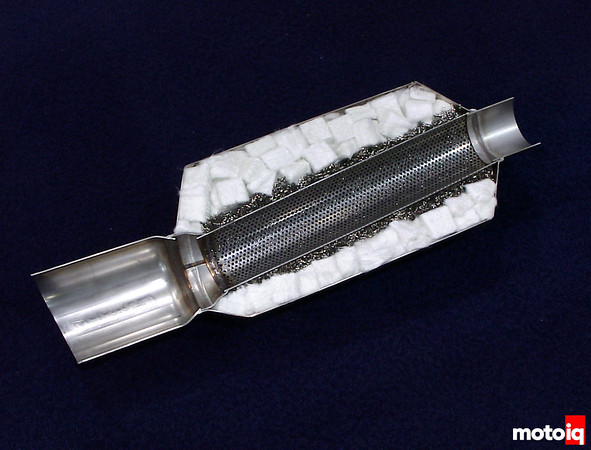 There is a tape with a width of 2.5 and 5 cm, for an ATV, a width of 2.5 cm will be optimal.
There is a tape with a width of 2.5 and 5 cm, for an ATV, a width of 2.5 cm will be optimal.
When reassembling the exhaust system, use heat resistant sealant to seal the joints.
Silencer for ATV.
This type of muffler tuning is especially relevant for hunters, but can also be indispensable for people riding an ATV with a loud exhaust in densely populated areas. The disadvantages include a decrease in engine power when using additional mufflers, although manufacturers claim that this does not happen.
Factory models of additional mufflers (for example, KOLPIN) are very easy to mount on an ATV and also easy to dismantle if necessary, but again everything comes down to money, and ATVs make an additional jar with their own hands and connect it to the main muffler using a small pipe and clamps .
You can listen to the sound of the exhaust with an additional muffler in the video below.
ATV exhaust snorkel.
This snorkel is made solely to avoid water entering the engine through the exhaust pipe and to easily overcome deep fords.
It is very easy to make a nozzle: as a donor, you can use the muffler pipes of a VAZ car, choosing the most suitable length in the store, welding a snorkel of the shape and length you need on the spot, and you can fix the structure with clamps.
If overcoming fords is not a frequent occurrence for you, it is more expedient to use a stainless corrugated pipe (sold in hardware or plumbing stores) and attach it with clamps for the duration of the “water procedures”.
Well, in the end, we offer you a photo of frankly brutal exhaust tuning, as you can see, sometimes everything is limited only by our imagination. Good luck on the road and stay with us.
 How to reduce the sound and volume of the exhaust
How to reduce the sound and volume of the exhaust 08/27/2018
What can I do to make the car run as quietly as possible? The main cause of loud noises on the road is the exhaust system. Make changes to it, and you will feel how much more comfortable it is to be in the cabin. We tell you how to make a quiet exhaust on your own, without resorting to the help of specialists.
To understand the cause of loud noises, you need to know how a standard exhaust system works and what stresses it is subjected to during operation. Temperature changes (cold and heat), contact with moisture, dirt and dust - all this provokes the development of corrosion. After some time, the sections of pipes with perforation and those parts of the partitions that are located inside the muffler can burn out. Sound reflectors gradually become unusable. In particularly difficult cases, only one thing will save you from a loudly working exhaust system - replacing the old muffler with a new one.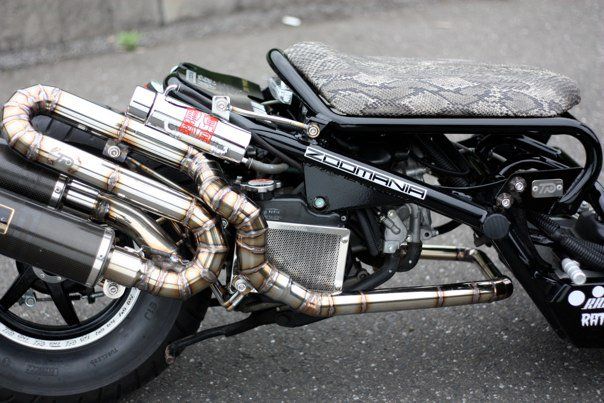
Where do loud noises come from in the exhaust system? They have different origins. Firstly, these are sounds from the expansion of gases that pass through it. Secondly, it is the noise caused by the vibration of the components of the exhaust structure.
You can do all the work listed below by yourself. So, how to make the exhaust quieter:
If everything is clear with the third method, then the first two need additional explanations. Let's start with what a resonator is and what it is responsible for.
An exhaust resonator dampens (disperses) the sound vibrations that result from loud exhaust gases leaving the combustion chamber. Structurally, the resonator is a multicomponent device through which gas flows pass. In everyday life, it is often called the "middle muffler", since it is located precisely in the middle part of the exhaust system. Gases under pressure enter the resonator, lose some of their energy and move on with less momentum. Later, passing through the system of labyrinths in the silencer, they dissipate even more.
In everyday life, it is often called the "middle muffler", since it is located precisely in the middle part of the exhaust system. Gases under pressure enter the resonator, lose some of their energy and move on with less momentum. Later, passing through the system of labyrinths in the silencer, they dissipate even more.
The loudness of the sound is influenced by several parameters of the resonator at once: its size, shape and design. If the operation of this device is disrupted, the entire exhaust system suffers, and first of all the driver: he not only listens to loud sounds, but also breathes gases that penetrate into the car interior. At the same time, the engine suffers - its service life decreases.
The performance of the resonator depends on three factors: the condition of the catalyst, which reduces the concentration of harmful substances in the exhaust gases, the diameter of the pipes and the cleanliness of the muffler itself. If the device works stably, it means that the gas passes freely through its cavities, but at the exit its energy is several times less than at the entrance. For foreign cars, exhaust system components are usually made of denser and heavier materials, which are less prone to vibrations. This must also be taken into account when evaluating its work and, most importantly, the “loudness” while the car is moving.
For foreign cars, exhaust system components are usually made of denser and heavier materials, which are less prone to vibrations. This must also be taken into account when evaluating its work and, most importantly, the “loudness” while the car is moving.
Above we wrote about how to reduce the exhaust sound - install an additional or replace the old resonator with a new one. Here's what to do in the first case:
As an alternative to the standard resonator, you can choose a model with sound-absorbing filling. In such a device, the internal cavities are filled with basalt fiber or a material with similar characteristics. In addition to the main property - the ability to absorb sounds - the filler is durable and tolerates heat well.